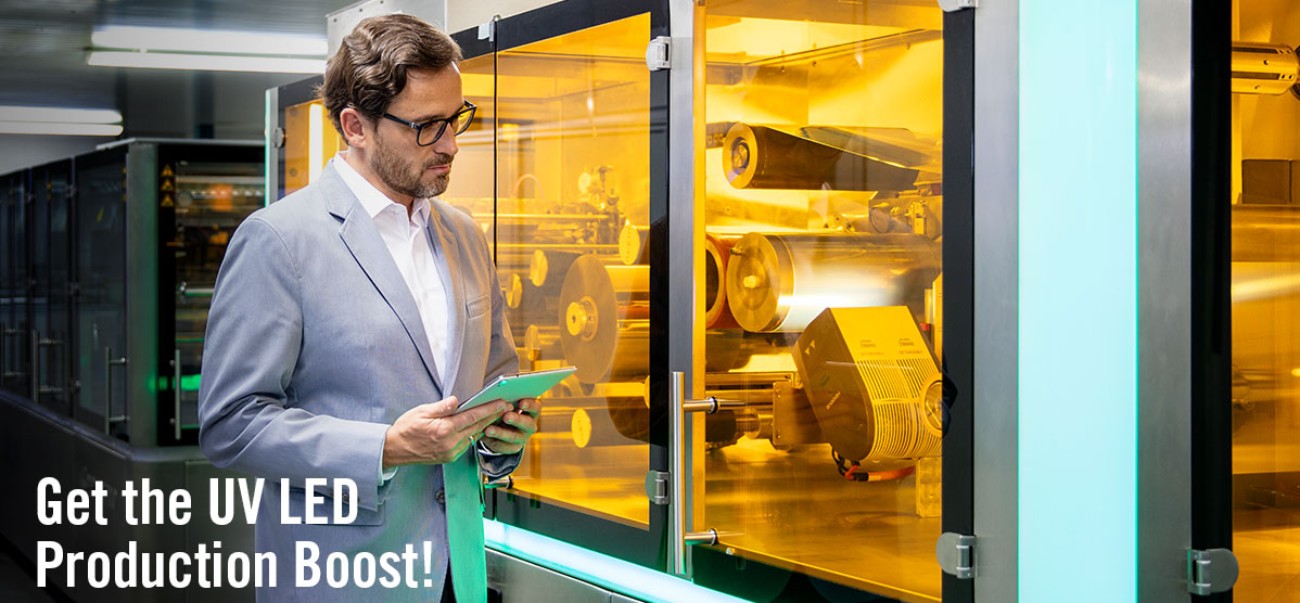Commercial use of UV LED curing technology is advancing at a rapid pace due to improvements in energy output and increasing availability of ink, adhesive, and coating chemistry formulations. Currently, UV LED curing is used commercially for graphic arts printing applications such as digital inkjet, flexographic, and offset sheet-fed printing as well as industrial inkjet marking/coding, adhesive bonding, sealing, screen print decorating, electronics encapsulating and potting, and photoresist applications.
As the intensity output of UV LEDs increased, at a rate of 12% annually, high speed converting applications became feasible. Retrofitting converting lines which have existing UV curing systems to UV LED curing systems (in addition to or as a replacement) is inevitable for certain applications given the significant improvements in production rates and resulting bottom line business benefits available.
Let’s look at some of the key characteristics of UV LED curing technology and how this impacts production rates.


